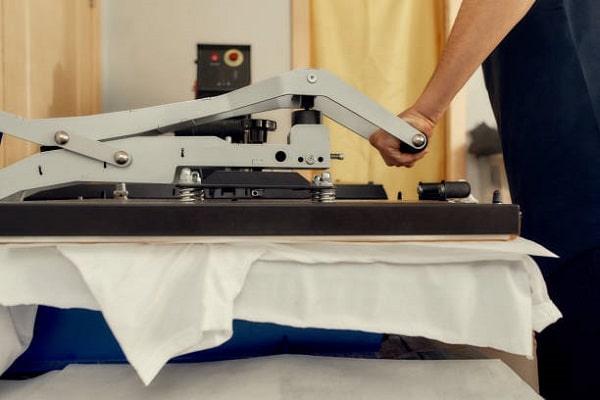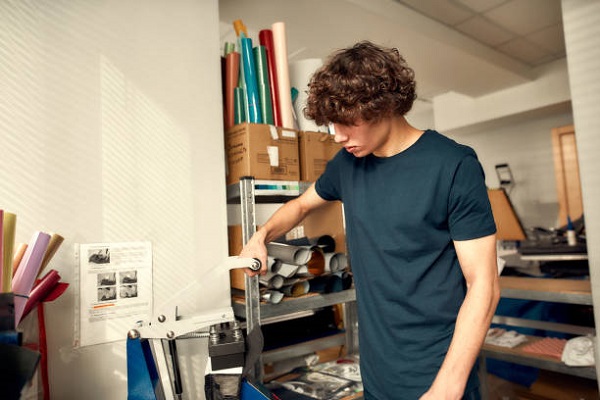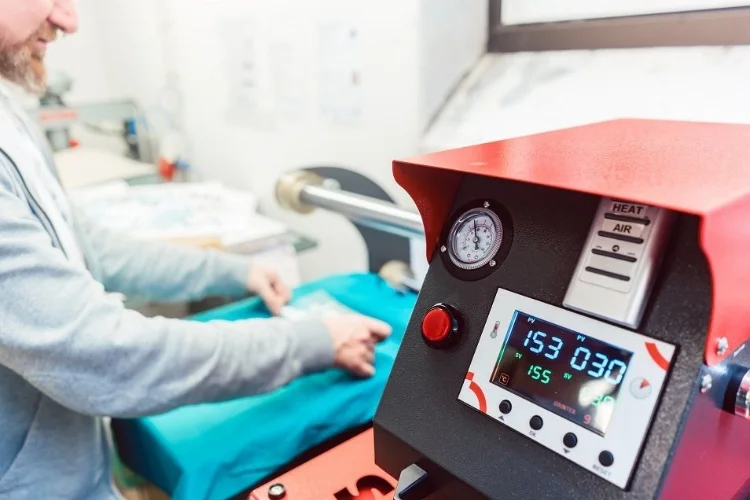Learn the Basics of T-shirt Heat Printing
by Anthony Clark
Anyone wishing to go into t-shirt heat printing should learn the basics of how to do it. That said, there are many ways to print t-shirts. One of the popular methods is heat printing.
But what is heat printing?
Defining Heat Printing
Heat printing, which is also known as heat transfer printing, is the process used to apply heat on materials with heat presses. The materials used in heat application are usually coated on one side with heat-sensitive adhesives. When the heat press is used to apply the heat to the elements, they stick to the surface to which they are being applied. This process results in a garment or t-shirt that is decorated with artwork such as images, graphics, text, and photos.
What to Consider When Choosing a Heat Press

When heat printing, consider three significant components – namely temperature, time, and pressure. Each material used in heat transfer has its instructions that you need to follow. These instructions are usually related to the temperature settings to enable the image to stick to the fabric; the time necessary for the heat to be applied to the design; and the pressure which is the amount of downward force required to press the heated design into the garment.
Another thing to consider is the kind of heat press you will need to use in your business. While there are many options to choose from, consider these factors in selecting the right heat press for your purposes.
- Space: The amount of working area you need for your t-shirt printing operations;
- Production: The volume of printed t-shirts or garments you intend to produce whenever you use your heat press;
- Size: The kind of garments you plan to decorate, whether they are large or small;
- Experience: The amount of heat pressexperience that you possess;
- Cost: The amount of money you are willing to invest in your t-shirt printing tools and equipment.
Taking these factors into consideration, you are in a better position to choose the best heat press for your business.
Choose a basic heat press if you are a home-based operator carrying out small jobs on a tight budget. If your enterprise is a massive operation requiring more sophisticated equipment, you would need a larger, more professional heat press. Bigger heat presses allow for bulk production as well as the flexibility to also produce designs on larger garments.
How Heat Presses Operate

Heat presses operate in pretty much the same way whether it is a basic unit or a professional machine.
- Flip the on/off switch to turn the power on
- Adjust the thermostat knob until the heating light (red) comes on
- Once your desired temperature is reached, turn the thermostat knob back until the heating light is off. This light will turn on or off to maintain your desired temperature for the heat transfer
- For heat presses that are equipped with digital timers, you need to press the timer to start. At the sound of the alarm, select stop to reset the timer
- Open the heat press by lifting the handle
- Spread the t-shirt out on the platen and place the Transfer Paper face down on the t-shirt
- Lock the heat press by bringing the handle down
- Using the instructions provided, set the timer of your heat press
- Open the heat press by lifting the handle
- Carefully peel the heat transfer paper off the t-shirt
- Wait for at least 24 hours to allow the print to “cure” before you wash the t-shirt.
Follow the temperature and heat instructions of the fabric and transfer paper you are working with. If you made a mistake and applied too much heat to the transfer you are working on, don’t worry. In most cases, it takes much heat to produce an even transfer of the designed image. Ensure that the right amount of heat is applied to your transfer as too little heat won’t be effective for the artwork to adhere to the t-shirt.

To avoid burning your t-shirt during printing, it is a good idea to test print your transfer on an old shirt first. You may also test print your design on ordinary paper first to see how it will come out. If the tests are OK, then you can continue your transfer on the t-shirts you want to decorate. As you get the hang of printing t-shirts, you will find it much easier to produce high-quality t-shirts each time you use your heat press machine.
Another good practice is to stretch your t-shirt before you load it into the heat press machine. Stretching the t-shirt prevents the transfer from getting cracked.
When loading the t-shirt onto the heat press, make sure that it is well aligned and straight. You don’t want your transfer to be crooked. Placing the t-shirt straight onto the heat press is made easier with the grids, rulers, or lasers that some heat presses are equipped with. A quick and easy way to accomplish a straight fit is to align the shirt’s tag to the backbone of the heat press.
 |  |  |  |

About Anthony Clark
Anthony Clark always had a passion for digital drawing and printing ever since he was young. He would wander around his parents' house in Phoenix, Arizona drawing various things with his older digital tablet. Be it just a memory collection or a portrayal of anything: objects, parents, school, events, etc. He received his BA in Graphic Design at San Jose State University - the heart of Silicon Valley. Now Mr. Clark is excited to present his experience coupled with some colorful dips to help shape the future of printing.
Thoughts on "Learn the Basics of T-shirt Heat Printing"
 |  |  |  |
Get some FREE Gifts. Or latest free printing books here.
Disable Ad block to reveal all the secret. Once done, hit a button below
 |  |  |  |